Karina Litvinova
Laser-based techniques in diagnostics, treatments and surgery
Aston Medical Research Institute // Birmingham, United Kingdom
Q&A Session II // Thursday, October 29 // 1.35 pm – 2.20 pm (CET)

The leading causes of death among the worldwide population are cancer and cardiovascular diseases (CVDs). The number of heart attack cases, for example, will more than double in the next 15 years. Similar increases have been projected for the number of newly discovered cancer cases. It is well documented that early diagnosis of cancer, as well as heart disease, is associated with improved prognosis. Meeting all these challenges will require new methods and devices with which, ideally, diseases can be caught and fought. Newest optical technologies are well suited to fill this need. Fluorescence Spectroscopy is an excellent tool for non-invasively obtaining valuable biochemical information related to the metabolic properties and structural component of the extracellular matrix in tissue. Hyperspectral imaging based on fluorescence spectroscopy combines both the chemical specificity of spectroscopy and the spatial resolution of imaging. Laser-tissue welding/soldering is a procedure for fusing or uniting edges of two opposing animal or human tissue segments by the laser photoexcitation of their native chromophores and water, only light acts as the bonding catalyst. The advantages of these techniques over traditional wound closure are no foreign body reaction and less scar formation. Laser exposure provides better tightness then suturing which is particularly important for vascular surgery, intestine and nerve anastomosis.
It will be considered the recent status of laser technology applied in biomedicine, particularly in distinguishing pathologies/normality and further diagnostics. It will be presented our recent data in clinical fluorescence spectroscopy when registration of collagen, elastin, NADH, FAD and porphyrin’s spectra were used in vivo in normality and disease in three areas of medicine – oncology. We will message laser ablation as an alternative treatment technique to RF ablation and cryoablation in the field of cardiac ablation. We will present satisfactory laser-tissue welding on the heart tissues and aortas using lasers with pulse bunch generation, without any glue or solder. Additionally, it will be shown the preliminary results of laser tissue welding and laser-tissue soldering for mucosal and vascular repair.
Thus, optical methods of biotissue investigation offer significant advantages over alternative methods. These advantages demonstrate the huge success of such techniques.










